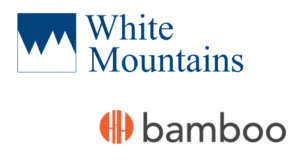What is better HO3 or HO5?
What is better HO3 or HO5?
An HO-3 policy only covers personal property for named perils, while an HO-5 policy covers personal property for open perils. In simple terms, this means an HO-5 insurance policy is more comprehensive and covers damage to your personal property in all cases, except damage specifically excluded from your policy. Feb 23, 2022
What is the HO3?
Homeowners Policy Special Form 3 (HO 3) — part of the Insurance Services Office, Inc. (ISO), homeowners forms portfolio, the HO 3 insures the described owner-occupied dwelling, private structures in connection with the dwelling, unscheduled personal property on and away from the premises, and loss of use.
What is HO6?
An HO6 insurance policy is homeowners insurance for those who own a condominium or co-op unit. As a condo or co-op unit owner, you own and are likely responsible for damages to your unit.
What is coverage AB and C?
Coverage B: Other Structures. Covers damage to other structures or buildings, such as a detached garage, work shed, or fencing. Coverage C: Personal Property.
What are the six categories typically covered by homeowners insurance?
Generally, a homeowners insurance policy includes at least six different coverage parts. The names of the parts may vary by insurance company, but they typically are referred to as Dwelling, Other Structures, Personal Property, Loss of Use, Personal Liability and Medical Payments coverages.
What is an HO 2 policy?
HO2 Insurance Policy Explained The HO2 policy is a named-perils only insurance policy which means that it covers both your dwelling and personal property from damage caused by events, or perils, specifically named in your policy and nothing else. Some of the common named-perils found in an HO2 policy include: Theft. Aug 6, 2020
What is an HO 5?
Sometimes called the comprehensive form, an HO5 policy is a type of home insurance written on an open-perils basis. This means your insurer covers damage to your home and personal property when it’s caused by an event, or peril, as long as it’s not listed as an exclusion in the policy.
What is Coverage B on homeowners insurance?
Coverage B, also known as other structures insurance coverage, is the part of your homeowners policy that protects structures on your property not physically connected to your home, such as a detached garage, storage shed, or gazebo.
What type of coverage is coverage E in homeowners policies?
The Coverage E—Personal Liability Coverage provisions provide coverage if a claim is made or a suit is brought against an insured because of bodily injury or property damage arising from a covered occurrence.
What is the 80% rule in insurance?
The 80% rule means that an insurer will only fully cover the cost of damage to a house if the owner has purchased insurance coverage equal to at least 80% of the house’s total replacement value.
What is insurance coverage C?
Personal property coverage, which is Coverage C within home insurance policies, helps to pay for your personal items that have been damaged, destroyed or stolen due to a covered peril. It’s standard protection within many home insurance policies and is pivotal to cover those personal items that mean the most to you.
What is not covered under Coverage B?
Since Coverage B is an extension of your policy’s dwelling protection, Coverage B’s exclusions are similar. Your homeowners policy excludes damage to your other structures from earthquakes, floods, freezing, mold or fungus, and wear and tear. Dec 8, 2021
What are the 3 basic levels of coverage that exist for homeowners insurance?
Homeowners insurance policies generally cover destruction and damage to a residence’s interior and exterior, the loss or theft of possessions, and personal liability for harm to others. Three basic levels of coverage exist: actual cash value, replacement cost, and extended replacement cost/value.
What is covered under Coverage A?
What Is Coverage A – Dwelling Insurance? Also known as main structure coverage, dwelling coverage is the part of your home insurance that pays to repair or rebuild your home’s physical structure (think: walls, floors, roof, windows, support beams, and foundation) when a covered incident damages it.
What is the difference between homeowners insurance and property insurance?
Homeowners insurance covers liability, which you face if a visitor suffers injury or property damage while on your property. Unless you purchase a separate liability policy or add this coverage to your policy with a rider for a separate premium, standard property dwelling insurance does not come with this protection.



